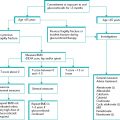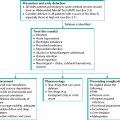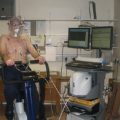Old people in society
Old people are more likely to have low incomes and problems with housing (see Box 15.1). Although there is a wide range of statutory services and benefits available, many older people have a limited understanding of their entitlements. Indeed, many health professionals are unfamiliar with the full range of services available. This may serve as a barrier to older people claiming benefits or services for which they are eligible.
Only about 5% of older people live in institutions, although this figure rises to 25% in those aged over 85 (see Figure 15.1). Most elderly people live independently at home, with over half of women over the age of 75 living alone. There are estimated to be 6 million informal carers in the UK, many of whom are pensioners themselves (see Figure 15.2). The physical, emotional, financial and social strain placed upon some carers is therefore a significant problem.
Benefits
All people over the age of 65 who have paid sufficient national insurance contributions are eligible for a state pension in the UK. If their weekly income falls below a minimum threshold a top-up pension credit may be payable. Those on a low income may be able to claim housing benefit to cover part or all of their rent, and council tax credit to the value of all or part of their council tax liability. Winter fuel payments are made to those aged over 60 to cover the additional costs of heating during winter months.
Box 15.1 Older people and income
- State benefits are the main source of income for pensioners
- Older pensioners generally have less wealth than those around retirement age
- At least half a million pensioners do not claim the benefits to which they are entitled
- Spending priorities change with age, with an increasing proportion of total spending going on food, housing and fuel
- In 2001 a third of older households lived in poor housing and this proportion increased with age. The most common reason for a dwelling to be declared inadequate was insufficient heating
Information from the Office for National Statistics. www.statistics.gov.uk
Figure 15.1 People who live in care homes, by age and sex (April 2001, Great Britain). Information from the Office for National Statistics. www.statistics.gov.uk
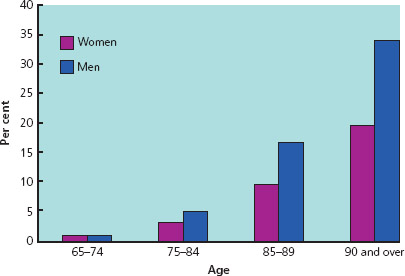
Attendance allowance may be paid to people aged over 65 to help meet the cost of paying for personal care (e.g. help with washing, dressing and getting in or out of bed). Disability living allowance is a similar benefit payable to younger adults living with a chronic disability. Mobility allowance can be claimed for the first time by people below the age of 65, but once granted it may continue to be paid after that age.
Figure 15.2 Older people providing unpaid care, by sex and age (April 2001, England and Wales). Information from the Office for National Statistics. www.statistics.gov.uk
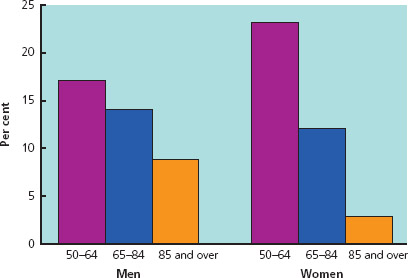
Box 15.2 How clinicians can help carers
- Recognise and acknowledge the role of the informal carer
- Listen to carers – they know the person they care for very well. When taking a social history, specifically enquire about how they are coping
- Give information about diagnosis and prognosis
- Make available information about statutory, voluntary and private provision of services in your area, including respite care
- Direct carers towards sources of information and support (see further resources section)
Supporting carers
Carers may request an assessment of their needs at any time. In England and Wales carers can have services provided directly to them, which may be subject to means testing. In Scotland, carers cannot receive services in their own right, but their needs should be taken into account when assessing the person they care for. Home adaptations and help with caring and household tasks may be available. Sitting services can allow carers to leave the house for a few hours at a time, or respite care may allow them to take a longer break. There is a number of voluntary organisations providing support and advice for carers (see further resources section) and there are a number of ways in which clinicians can help (Box 15.2).
Carers’ allowance is a means-tested benefit payable to those caring for a chronically disabled person for at least 35 hours a week. To be eligible, the carer’s income must be below a minimum threshold, and the disabled person must be receiving either an attendance allowance or disability living allowance.
Box 15.3 A typical case history
An 83-year-old lady was admitted following a fall at home. A diagnosis of a urinary tract infection with a background of dementia was made. She lived alone in her own property, and had been widowed 2 years ago. She received regular support from her daughter, but did not have a formal package of care. Her mobility had declined in recent years, and she sometimes had difficulty reaching the toilet in time. Her daughter assisted with shopping, but often found out-of-date food in the fridge. She seemed disinclined to prepare her own meals, and ate mainly soup or sandwiches.
Before discharge, a comprehensive geriatric assessment was performed, including assessments by physiotherapists, occupational therapists, nursing staff and social workers. A care plan was made.
Stay updated, free articles. Join our Telegram channel

Full access? Get Clinical Tree


